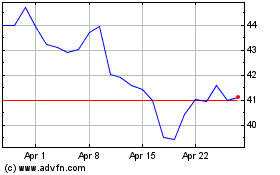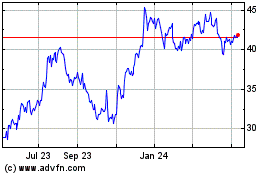Twin Bank Failures, Tally to 28 - Analyst Blog
April 11 2011 - 3:25AM
Zacks
After a week’s pause, U.S. regulators were back in action,
shuttering two more banks in Illinois and Nevada. These pushed the
number of failed U.S. banks to 28 so far in 2011. Looking back,
there were 157 bank failures in 2010, 140 in 2009 and 25 in
2008.
While the lifesaving programs launched by the government worked
in favor of the bigger banks, many smaller banks are still
struggling to survive. Persistently plunging home prices, lofty
loan defaults and a still-high unemployment rate continue to
threaten such institutions.
With the industry absorbing bad loans offered during the credit
explosion, the banking system is vulnerable to some severe
problems. This is aggravating the risk of bank failures even
further. Moreover, out of the total $245 billion handed out to
banks, more than $20 billion is still due from about 600
institutions.
The failed banks are:
- Western Springs, Illinois-based Western Springs National Bank
and Trust, with total assets of about $186.8 millionand total
deposits of about $181.9 millionas of December 31, 2010.
- Las Vegas, Nevada-based Nevada Commerce Bank, with about $144.9
million in total assets and $136.4 millionin total deposits as of
December 31, 2010.
These bank failures represent another jolt to the deposit
insurance fund (DIF) meant for protecting customer accounts, as it
has been appointed receiver for the banks.
The Federal Deposit Insurance Corporation (FDIC) insures
deposits in 7,657 banks and savings associations in the country as
well as promotes the safety and soundness of these institutions.
When a bank fails, the agency reimburses customers deposits of up
to $250,000 per account.
Though the FDIC has managed to shore up its DIF over the past
few quarters, the outbreak of bank failures has tested its limits.
As of December 31, 2010, the fund remained in the red with a
deficit of $7.4 billion, slightly better than the deficit of $8.0
billion in the prior quarter. The agency expects the fund to be in
the black later this year.
The failure of Western Springs National Bank and Trust is
expected to deal a blow of about $31.0 million to the FDIC, while
Nevada Commerce Bank will cost about $31.9 million.
Bloomington, Illinois-based Heartland Bank and Trust Company has
agreed to assume the entire deposits and assets of Western Springs
National Bank and Trust. The FDIC and Heartland Bank and Trust
Company have agreed to share losses on $100.8 million of Western
Springs National Bank and Trust's commercial loans.
Los Angeles, California-based City National Bank has agreed to
assume all of the deposits and assets of Nevada Commerce Bank. The
FDIC and City National Bank have agreed to share losses on $111.1
million of Nevada Commerce Bank's assets.
The number of banks on FDIC’s list of problem institutions grew
to 884 in the fourth quarter of 2010 from 860 in the previous
quarter. This is the highest number since the savings and loan
crisis in the early 1990s.
Increasing loan losses on commercial real estate are expected to
result in hundreds of bank failures in the coming years. Going by
the current rate of bank insolvencies, the DIF is likely to feel a
$52 billion dent by 2014. However, the pace of bank failures has
been slow so far this year.
With so many bank failures, consolidation has become the
industry norm. The failure of Washington Mutual in 2008 was the
largest in the U.S. banking history. It was acquired by
JPMorgan Chase & Co. (JPM). The other major
acquirers of failed institutions since 2008 include U.S.
Bancorp (USB) and BB&T Corporation
(BBT).
BB&T CORP (BBT): Free Stock Analysis Report
JPMORGAN CHASE (JPM): Free Stock Analysis Report
US BANCORP (USB): Free Stock Analysis Report
Zacks Investment Research
US Bancorp (NYSE:USB)
Historical Stock Chart
From Jun 2024 to Jul 2024

US Bancorp (NYSE:USB)
Historical Stock Chart
From Jul 2023 to Jul 2024
